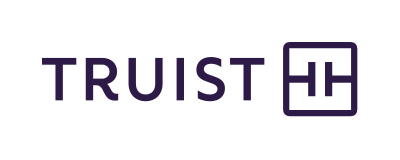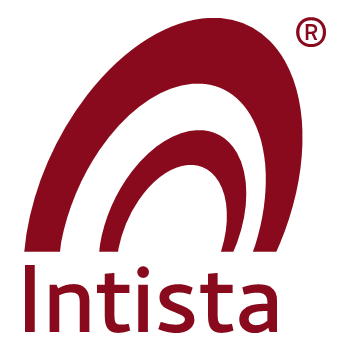Platform Readiness
Preparing a business for rapid scaling via M&A and thorough integration
Scalability is crucial for businesses aiming to successfully acquire other companies. A scalable business model allows a company to efficiently manage increased workloads and expand operations without compromising performance or quality. When you acquire new assets, processes, and teams, a scalable business is more agile at handling changes.
A platform business is necessary to integrate additional business acquisitions (add-ons), and it must be prepared and able to absorb future acquisitions. Whether this platform is your current business or the first in a series of acquisitions, it must be scalable, not only in business operations and technology, but also in personnel, governance and business culture mindset.
Scalability often involves leveraging technology and streamlined processes to enhance operational efficiency and to reduce costs, making the acquisition process more manageable and less risky. By being ready to effortlessly integrate, platform businesses not only facilitate successful acquisitions but also ensure that their company remains resilient and capable of thriving in an ever-evolving marketplace.
You’re about to acquire a business. After the deal is complete, are you ready to take on the integration?
Platform Readiness is an insurance policy that your business is prepared and able to deliver the ROI for your future acquisitions
Intista Prepares Businesses to Grow Through Acquisition
Intista has developed a process to prepare businesses for upcoming acquisition integrations, based on our experience with M&A integrations, Change Management, business operations as well as both project and program management. The result is an unambiguous process that provides structured approach to make a business platform ready for future acquisitions and their subsequent integration.

The Six Steps to Platform Readiness
1. Secure leadership buy-in to the investment
- Set clear expectations that this initiative will take time, effort, manpower, and budget. It will require a different emotional mindset
- Prepare management for tangible and intangible changes. They are often prepared for a digital transformation but oftentimes are unprepared for the amount of soft skills, training and culture work involved
- Create a Steering Committee to make key decisions of integrations and to hold the Readiness Team accountable when asked
2. Assess current capabilities, operations, technologies. Discover future aspirations and issues that must be addressed
- Hold formal interviews and facilitate informal discussions about the ways the different businesses operate
- Obtain detail reports of the preparation, announcement, and execution of any prior integrations
- Record any information about working styles and personalities of the people involved
- Inventory readiness objectives and training needs, helping prepare the business for future add-on acquisitions
- More details below
3. Design new operations, using new tools and processes
- Our assessment helps us decide a direction. Often the readiness planning starting point is either the need for specific technology, or necessary changes to business operations.
- To improve business operations, we will propose new tools or an expanded use of existing tools
- High performing employees are invited to join this transformation and lead its roll out
- Identify training needs
- Implement budget and financial controls
- Upon review, the plan will include risk management
4. Implementation of changes is an investment
- There will be a cost in purchasing new tools, and a cost in assigning high performing employees on the implementation
- Establish a process and technology for collecting and incorporating feedback
- Create training content, so that employees are able to navigate the learning curve quickly
- Document a compelling, candid narrative of the benefits of scalability, including improvement areas that need attention
5. Create the list of projects and activities needed to prepare for add-on acquisitions
- Begin the transformation with a pilot collection of projects. Review and improve upon projects
- Test the training, survey trainers and trainees for feedback, and improve the content
- The planned initiative implementation may require changes and improvements as expected discoveries arise
- Charters and checklists help each work stream to create their own list of tasks and projects
- Each list is assessed to identify and address potential risks, and to set contingency budgets
6. Execute the full platform readiness plan
- The formal launch of the initiative should include a presentation of the business improvement plans
- Prioritize correctly the many projects and tasks so they can run smoothly
- Communication and coordination are required in the teams, especially to adjust for unexpected items
- Work streams must constantly report back up to leadership the status of each project
Assessment of capabilities, operations and technologies
Preparedness
- How do you know if you are capable to keep business-as-usual while integrating?
- How do you know whether your planning is comprehensive?
- Have you focused and prioritized the correct areas, which match the original reasons for acquiring?
The assessment validates your preparedness for bringing the businesses together
How Realistic is your Integration Plan?
- Can you deliver acquisition value?
- Is your business able to grow after acquiring?
- Will the business be able to perform as expected, within your timeline?
- Have you taken into consideration the complexities of launching an integration considering the acquired employees?
Ensure your processes and templates to merge employees, technologies, operations, processes and business cultures are on the right track
Key Features of the Readiness Assessment
Ensuring that the plan and processes you have are realistic and achievable
Got Questions?
1. Lessons Learned
Reviewing past acquisitions, and the integrations that followed them. Reviewing what went well, could have been improved, and any corrective actions.
2. Operations
How do you currently operate, and what elements of it need to be more scalable.
3. Mechanics
A review of your current playbook. We look at the tools used for tracking integrations, and the templates/checklist you have used in the past.
4. Integration Team Organization
The program is run by a dedicated team that is responsible for delivering the combined business. (Steering Committee, Integration Management Office (IMO), and Workstreams). We’ll discuss the makeup of the team, roles, meeting frequencies, and the types of person that fit such roles
5. Working styles
We’ll review how your teams and office locations interact with each other, with customers and with partners.
6. Communication
An open secret about integration success is the quality of the communication. During the engagement we’ll go over the communication plan role and duties
7. Big Picture of the Execution
The assessment isn’t the right vehicle to get into the details of an integration plan, but we’ll discuss the project outlines, their sequencing, and your milestones
















